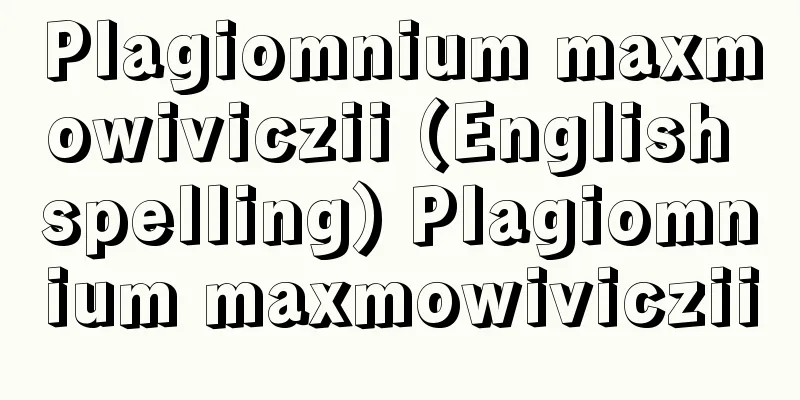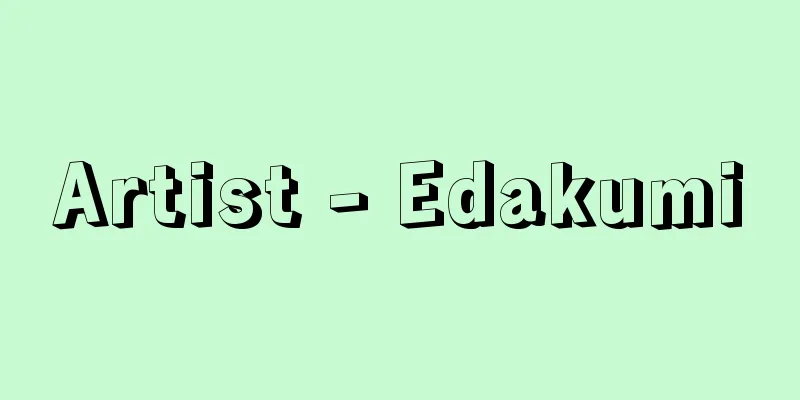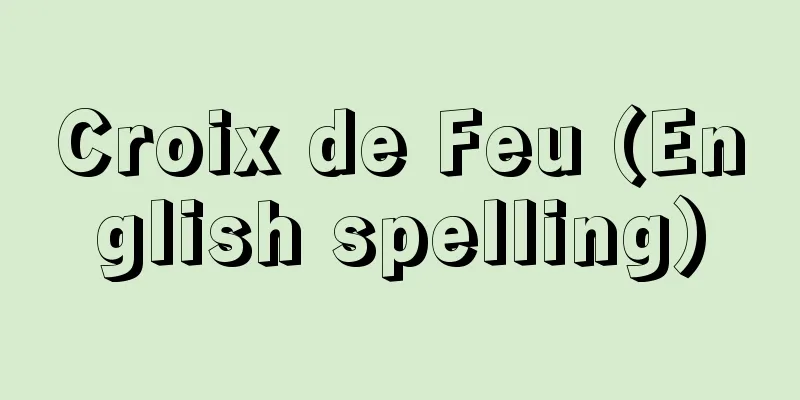Mathematics - mathematics

|
Mathematics is the study of numbers, quantities, shapes, etc., beginning with counting and measuring things. We live our daily lives in some way connected to mathematics. In today's nations and societies, where economic organizations and science and technology are highly developed, mathematics is exerting an ever-increasing influence in breadth and depth, from parts of our daily lives directly related to them, such as household accounting books and bankbooks, to the calculation of the orbits of artificial satellites. Historically, mathematics has been used and developed for practical purposes such as land surveying, commerce, monetary transactions, navigation, calendar calculations, and the construction of churches and palaces. On the one hand, it has provided basic methods and powerful tools for elucidating the laws of natural phenomena, but its theories have not always been studied with the awareness that they will be connected to practical use. Rather, there are many cases in which research motivated by pure intellectual curiosity about the logic inherent in mathematics has often produced original theories. This is because mathematics is a creative field similar to art. In other words, mathematics, as an expression of the human spirit, reflects the tendency toward logical rigor and simplicity and the desire for aesthetic perfection, and its basic elements consist of logic and intuition, analysis and construction, generality and particularity. The interaction of these opposing forces and the struggle to unify them give rise to the vitality and usefulness of mathematical science. [Hiroshi Noguchi] Subjects covered in mathematicsMathematics is divided into pure mathematics, which is the study of mathematics in itself, and applied mathematics, which is the study of mathematics in response to demands from other fields of science, such as mechanics and physics. Pure mathematics includes the foundations of mathematics, mathematical logic, set theory, algebra, group theory, number theory, geometry, differential geometry, algebraic geometry, topology, analysis, complex function theory, functional analysis, functional equation theory, special functions, numerical analysis, and probability theory. Applied mathematics includes mathematics that aims to apply mechanics and theoretical physics, such as graph theory, combinatorics, statistical mathematics, and planning mathematics. From the perspective of mathematics education, mathematics is divided into early childhood mathematics, elementary mathematics (arithmetic), junior high school mathematics, high school mathematics (algebra, geometry, calculus, etc.), liberal arts mathematics for universities (linear algebra, analysis, etc.), and specialized mathematics, and specialized mathematics includes the aforementioned pure mathematics and applied mathematics. The subject matter dealt with in mathematics today can be classified as described above, but it goes without saying that the content and emphasis have changed significantly over time. For example, let's look at how geometric shapes are understood. Ancient Egypt and Babylonia had considerable knowledge of geometric shapes from ancient times. It was the Greeks who developed this knowledge into a theoretically systematic field of study known as geometry. The Greeks studied the lengths, angles, and areas of simple geometric shapes such as polygons such as triangles and quadrangles, and circumferences of circles. Pythagoras (c. 500 BC) established the properties of right-angled triangles, which were already known to the Babylonians, as the Pythagorean theorem and provided a proof of it. Euclid's (c. 300 BC) Stoichia (Elemental Geometry or Elements) adopted a method of building up rigorous reasoning based on definitions and five axioms, and geometry came to be established as a field of study with a purely deductive system. A little later, Archimedes (around 250 BC) and Apollonius (around 230 BC) diversified the subject of their research to include plane circles, ellipses, parabolas, solids, cylinders, and right circular cones, but the emphasis remained on calculating the area and volume of these figures. Thus, most of the geometric research necessary for daily life had been deepened to such an extent that it can be said that it was completed during the Greek period. On the other hand, the Platonic spirit demanded strict rules such as the ruler and compass being the only tools permitted for construction in geometry. For example, there are the three great Greek construction problems: (1) Using only a ruler and compass, construct a cube with twice the volume of a given cube, and (3) construct a square with the same area as a given circle. Many mathematicians tried to solve these problems, which had intrigued Greek mathematicians, but all attempts failed. It was not until the 19th century that the impossibility of constructing these three problems was proven by algebraic considerations, not by geometric considerations. One example of the influence of art on mathematics that should be particularly noted is the relationship between painting, architecture, and geometry in the 15th and 16th century Renaissance. Incorporating the perspective drawing techniques used by Italian Leonardo da Vinci and German painter Dürer, the French painters Desargues and Pascal founded projective geometry (17th century). Projective geometry studies the properties of figures that remain unchanged by projection and section, and is different in spirit from Euclidean geometry. In Euclidean geometry, figures are given as complete entities, and it is important to study their properties as they are. Therefore, Euclidean geometry did not take into account the study of properties that change figures. However, in projective geometry, on the other hand, concepts such as the length of a line segment, angles, and parallelism have no meaning. In the 19th century, non-Euclidean geometry, which is based on the denial of Euclid's parallel axiom but has a consistent system, was discovered and founded. Furthermore, the study of figures, which had been limited to quadratic curves at most, developed into differential geometry, which deals with figures as smooth curves and surfaces in space, after the establishment of calculus by Newton and Leibniz. On the other hand, shapes were shed new light on by the pioneering research of the 18th century German mathematician Euler, and they began to be studied through the concept of "topology." In the 20th century, shapes were generalized as sets given a topology, and all mathematical objects came to be understood as topological spaces. Currently, topology, also known as topological geometry, is used to study the topologically invariant properties of shapes, but this can be said to be a more general and abstract form of study of shapes than modern mathematics, which is far removed from the Greek era. [Hiroshi Noguchi] Relationship between mathematics and other disciplinesIn junior high school mathematics, we are taught the four arithmetic operations and elementary Euclidean geometry, which are indispensable tools for our daily lives as everyday calculations. On the other hand, as can be seen by considering the formulas for solving quadratic equations taught in mathematics at high school and above, it can be said that mathematics does not have much of a direct relationship with our daily lives. Looking at it this way, it may seem that what the academic discipline of mathematics as a whole aims for is unrelated to us. Here, we will look at the close and inseparable relationship between mathematics and other disciplines, and indirectly look at the relationship between mathematics and humans. Although it was later discovered that non-Euclidean geometry was possible by replacing the fifth axiom (the axiom of parallel lines) with another axiom, Euclid's Elements presented a typical example of an academic discipline that builds a grand system through pure deduction. Euclid's beautiful system of geometry already contained the spirit of modern mathematics, which seeks to build a system solely through logic premised on definitions and axioms. This fact is well illustrated by the words of the Greek philosopher Plato, who had a long-lasting influence on European thought: "Geometry is not geodesy, but the first step towards divinity." Mathematics first showed us what the sciences, including philosophy, should be like. Modern mathematics in Europe started from commercial arithmetic that served commercial capital, and shed the old shell of ancient and medieval times and donned the clothes of modernity through the algebra of Cardano and Ferrari in the 16th century, the analytical geometry of Descartes in the 17th century, and the calculus of Newton and Leibniz. Cardano and Ferrari continued to try to find the roots of cubic and quartic equations, but there was no particular urgent need to find the roots of cubic and quartic equations at that time. Therefore, their research can be considered to have arisen from purely intellectual or recreational interest. In this way, mathematics has an aspect that is related to humans as an object of play or entertainment. Descartes, the French philosopher known as the father of modern philosophy, wrote in his Discourse on Method that, of all the various sciences, mathematics alone is recognized as showing the clearest truth. Having used mathematics in his research into nature from a young age, he deepened his study of mathematical nature and endeavored to reform all natural science based on this view of nature and to establish the philosophy that supports it. The method of analytical geometry, which shows geometric figures using coordinates, is suited to Cartesian philosophy, and this eventually became an element that gave rise to calculus. Mathematics was essential to Cartesian philosophy, and to modern philosophy more generally. In addition, German philosopher John Leibniz, who introduced the symbols used in calculus today, called his paper "Theory of Combination" "a general method of reducing all theoretical truths to certain calculations," which is considered the forerunner of today's symbolic logic and which shaped Leibniz's lifelong thought. It can be said that logic began to change into a branch of mathematics from this point on. Furthermore, in the 17th century, mechanics, which was established by Galileo as terrestrial mechanics, was developed into Kepler's study of the mechanics of celestial bodies, and was further established by Newton as a more universal set of mechanical laws that unified the description of the motion of terrestrial and celestial objects. This is how classical mechanics was perfected, and the role that mathematics played in this process cannot be overlooked. During this period, mathematics was shown to be more than just a peripheral tool of natural science, but a discipline that showed the basic methods for theoretical science and was also an indispensable foundation that supported it. As is well known, the mathematical analyses of Euler, Lagrange, Laplace, and others in the 18th century formed the foundation of today's applied mathematics. In other words, calculus, which was linked to mechanics and astronomy under the mechanical view of nature established by Newton, developed into analytical mechanics, and became applied mathematics that served astronomy, physics, and engineering, dominating the mainstream of mathematics during the British Industrial Revolution. The range of applications of calculus was also extensive, with Euler, for example, researching everything from the motion of ships to creating tables of the motion of the moon, and even the physiology of the ear. In the first half of the 19th century, Germany was home to a great mathematician named Gauss who made great contributions to the fields of algebra, analysis, and geometry. At the age of 19 while studying at the University of Göttingen, he succeeded in constructing a regular heptadecagon inscribed in a circle, and rejoiced, saying, "The number-theoretic laws in this kind of cyclotomic theory are as beautiful as any law in astronomy." These words are comparable to those of Plato, who in ancient Greece elevated the human soul to the idea of good through his study of mathematics, and they heralded the revival of an aesthetic spirit in mathematics. This spirit brought about the great development of pure mathematics in the 19th century. In addition, from the mid-19th century, statistical mechanics and quantum mechanics developed as fields of physics that describe the movement of microscopic matter, such as the movement of gas molecules, and probability theory, which began around the time of Pascal, also plays an important role as the mathematical theory that underpins these. [Hiroshi Noguchi] Mathematical MethodsMethods in mathematics can be classified into various categories, but here we will discuss some of the most representative methods. The first method is the axiomatic method. The axiomatic method is a position in which an object is thoroughly analyzed, certain axioms are established, and then synthesis is carried out using the axioms. Euclid's method of deduction was formed under the influence of Pythagoras. First, Euclid decomposed all figures. He then decomposed them into triangles, and further decomposed the triangles into vertices, sides, angles, etc., and discussed the basic concepts of points, lines, planes, and angles, and their relationship to reality, for example, that a line is a length without width... Although this is in the form of a definition, it is an undefined concept whose nature is determined by axioms. Next, the relationships between these basic concepts are stated as assumptions, which can be called axioms. In this way, theorems such as the Pythagorean theorem are logically derived from these axioms as a synthesis. However, the new developments in non-Euclidean geometry, which denied Euclidean parallel lines axioms that had long been accepted and believed by everyone, provided mathematicians with an opportunity to reflect on the nature of axioms, and axioms came to be understood as assumptions that serve as the premise of a theory. Hilbert, who set out this as the nature of axioms and believed that mathematics is about developing theories based on them, reorganized Euclidean geometry based on this idea. In other words, mathematical objects (points, lines, numbers, etc.) do not have an a priori meaning in themselves, but their meaning is given only by propositions (axioms) that define their interrelationships. His work provided a solid foundation for the foundations of mathematics and mathematical logic, and the formal axiomatic method was established. The second method is the generative method. While geometry was treated axiomatically from an early stage, the theory of numbers was naturally generated as a self-evident description of the correspondence between things, and theorems related to it remained at the stage of organizing and describing the properties of numbers that had already been confirmed and the relationships between numbers for a long time. For example, natural numbers are the simplest of the numbers we deal with, and are used to count and order things. In contrast, there are numbers that represent the length of the diagonal of a square, which cannot be expressed as either an integer or a fraction. The existence of such irrational numbers surprised and greatly shocked Greek mathematicians of the Pythagorean school. The axiomatic definition of real numbers, which include all natural and irrational numbers, and the construction of a system of analysis based on it were very slow, and it was only in the 19th century that the set N of natural numbers was established by Peano's axiomatic system, and its elements were named natural numbers. Theorization based on the generative method gave rise to paradoxes such as Cantor's " S is the set of all sets," and in the 20th century, the question of what mathematics is was once again hotly debated. Cantor's paradox was raised in his treatise "On the Theory of Sets," and involves a problem similar to the 4th-6th century paradox (Epimenides' paradox) over whether the statement of a Cretan, "All Cretans are liars," is true or false. The cause of the paradox is the unlimited expansion of the concept of a set. Attempts have been made to overcome this contradiction using logicism, intuitionism, and formalism, mainly from the standpoint of mathematical foundations. The third method of mathematics is generalization and abstraction. This tendency is remarkable in modern mathematics. For example, when a fixed point theorem for continuous mapping is found that applies to one- and two-dimensional figures such as lines and disks, attempts are made to find Broel's fixed point theorem that applies to three-, four-, ..., and generally certain n -dimensional figures. In this case, the one- and two-dimensional theorems become special cases of this general theorem. This is the idea of generalization. In some cases, this idea is generalized beyond the case of a finite n to the case of infinite dimensions, as in Kakutani's fixed point theorem. And usually, generalization is pursued as far as possible. For example, numbers are a closed system for addition, and groups are the abstraction (axiomatization) of the properties of the operations of numbers. Similarly, figures such as lines, planes, and space are generalized and abstracted at the same time as they are generalized to n -dimensional vector space. Abstraction makes it possible to show the different results in an infinite number of cases with a single theorem. This generalization and abstraction is especially evident in modern abstract mathematics. The huge encyclopedic work on the foundations of modern mathematics written by a group of mathematicians known as Bourbaki is a monument to generalization and abstraction. A. Beil, a member of Bourbaki, stated that "Mathematics exists for the honor of the human spirit." In the 20th century, mathematics saw a movement towards abstraction and generalization, coupled with the revival of aestheticism by Gauss, and in the first half of the century, activities specific to mathematics were widespread and active. After World War II, stimulated by the practical experiences of mathematicians during the war, new disciplines began to be created between mathematics and cybernetics by Wiener, game theory by von Neumann, and computer science, which had arisen with the invention of the computer. These new sciences are now called mathematical sciences, and the relationship of mathematics to modern society is also undergoing a major transformation through these new sciences. [Hiroshi Noguchi] Checking logic in mathematicsSo far, we have roughly described the methods in mathematics, but here we will briefly look at the foundations of mathematics that both the axiomatic and generative methods have arrived at. Logicism is a theory that regards mathematics as a branch of logic, and was mainly advocated by the British philosopher Bertrand Russell. It began in ancient times when Leibniz proposed (1666) that logic is the universal science that is the foundation of all other sciences. Logic was created as a method of logical calculus by Dedekind and Frege, and Russell stated that "all mathematics can be reduced to logic." Russell worked with Whitehead to compile the symbolic Principia Mathematica (Principles of Mathematics) as part of logic, but in commenting on this book, Weyl said, "Mathematics is no longer built on logic, but on a kind of paradise for logicists." Intuitionism is a theory based on the idea that mathematical truths and objects can be directly grasped through the meaning and content of mathematics. Mathematicians who take this position include Kronecker and Poincaré. While Weierstrass defined irrational numbers as an infinite sequence of rational numbers and attempted to perform mathematical analysis based on the concept of irrational numbers, Kronecker placed emphasis on the intuition of integers. He is considered a pioneer of intuitionism because he asserted that only things that are finitely constructed exist. It was Luitzen Egbertus Jan Brouwer (1881-1966) who tried to reconstruct mathematics from the ground up in an intuitionistic way. He criticized the laws of classical logic that had existed since Aristotle. In particular, he argued that the unlimited use of the law of the excluded middle, which states that "it is either A or not A ," is unjustified, and that this is only correct when it is known that either A or not A is correct. Therefore, Brouwer does not accept indirect proof by the method of reduction. In addition, the concept of infinity plays an important role in mathematics, but in his view, the sequence of numbers 0, 1, 2, ... is the only possible open window to approach infinity. Thus, classical arithmetic is in line with intuitionism, but all classical analysis is subject to criticism from this doctrine. Broel established an intuitionistic analysis and set theory (1918-24), but it was too complicated and too different from conventional systems, making it very difficult to apply. Formalism is also called axiomaticism. It refers to Hilbert's program that goes beyond the scope of intuitionism, accepts certain parts of classical mathematics that have been created up to now, and tries to solve problems by proving the consistency of a thoroughly formalized set of mathematical axioms. This idea continues on the path to the foundations of mathematics, as mentioned above. [Hiroshi Noguchi] "What is Mathematics?" by Courant and Robbins, translated by Moriguchi Shigekazu (1966, Iwanami Shoten) " ▽ "Thoughts on Mathematics" by Murata Zen and Mogi Isamu (1966, NHK Publishing)" ▽ "Paths to Modern Mathematics" by Sawyer, translated by Serizawa Shozo (1968, Iwanami Shoten)" ▽ " Prelude to Mathematics" by Sawyer, translated by Miyamoto Toshio and Tanaka Isamu (1978, Misuzu Shobo)" ▽ "Mathematics and Culture" (Toyama Kei Collected Works, Mathematical Theory Series 6, 1980, Tarojirosha)" ▽ "History of Mathematics" by Ogawa Tasuku and Hirano Yoichi, edited by Iitaka Shigeru et al. (Lecture Series on Mathematical Thinking 24, 2003, Asakura Shoten)" ▽ "Introduction to Number Theory" by Yamamoto Yoshihiko (2003, Iwanami Shoten) "The Cultural History of Mathematics, Vol. 1 and 2, by M. Klein and translated by Shigeru Nakayama (1977, Shakai Shisosha, Gendai Kyoyo Bunko)" [References] | | | | | |Symbolic logic| | |Pythagoras' theorem| | | | | mathematics| theory| | | | | | | |Non- | |Source: Shogakukan Encyclopedia Nipponica About Encyclopedia Nipponica Information | Legend |
|
数学は、物を数えたり、測ったりすることに始まる、数・量・図形などに関する学問である。われわれは日常、数学となんらかのかかわりをもちながら生活している。今日のように、経済組織、科学技術の高度に発達した国家・社会では、家計簿、銀行通帳など日常生活に直接かかわる部分から人工衛星の軌道計算に至るまで、数学は広がりと深みにおいてその影響力をいっそう増してきている。 歴史的には、土地測量や商業や金銭取引、航海や暦の計算、教会や宮殿の建設など、実用上の必要から用いられ発展してきた数学は、一方では自然現象の法則性を解明するための基本的方法およびその強力な手段を提供してきたが、その理論が実用に結び付くことをつねに意識して研究されてきたわけではない。むしろ数学に内在している論理に対する純粋に知的な好奇心からの研究が、往々にして独創的な理論を生み出してきた例が多い。これは数学が、芸術にも似た創作的な分野であることによる。つまり、人間精神の一つの表現としての数学は、論理的厳密さ・簡潔さへの志向性と美的完成への願望が反映されているものであり、その基本的要素は、論理と直観、解析と構成、一般性と個別性からなる。これらの対抗する力の相互作用およびそれらの統一への苦闘が、数理科学としての生命力や有用性を生み出しているのである。 [野口 廣] 数学の扱う対象数学は、数学をそれ自身として研究する純粋数学と、力学・物理学など、他分野の科学からの要求に応じて数学を研究する応用数学に分類される。純粋数学に含まれる部門は、数学基礎論、数理論理学、集合論、代数学、群論、整数論、幾何学、微分幾何学、代数幾何学、トポロジー(位相幾何学)、解析学、複素関数論、関数解析学、関数方程式論、特殊関数、数値解析および確率論などである。応用数学は、グラフ理論、組合せ理論、統計数学、計画数学など、力学・理論物理学からの応用を目ざす数学が含まれる。数学教育の立場からみたときの数学は、幼児数学、初等数学(算数)、中学校数学、高等学校数学(代数、幾何、微積分など)、大学教養数学(線形代数、解析学など)および専門数学に分類され、専門数学は前述の純粋数学および応用数学を含めていう。今日の数学の扱う対象は、前記のように分類することができるが、その内容と力点の置き方が時代とともに大きく変化してきたのはいうまでもない。 たとえば、図形のとらえ方についてみてみよう。古代エジプトやバビロニアでは、古くから図形に関するかなりの知識をもっていた。それを幾何学として、理論的体系をもつ学問に発展させていったのはギリシア人である。ギリシア人たちは、三角形、四角形などの多角形や円周などの単純な図形の長さ、角、面積をさまざまに研究した。ピタゴラス(前500ころ)は、すでにバビロニア人たちに知られていた直角三角形の性質を、三平方の定理(ピタゴラスの定理)として確立し、その証明を与えた。また、ユークリッド(前300ころ)の『ストイケイア』(『幾何学原本』または『原本』)は、定義と五つの公理を基に厳密な推論を積み上げる方法をとり、幾何学は純粋な演繹(えんえき)体系の学問として確立されるに至った。この時代をやや下って、アルキメデス(前250ころ)やアポロニオス(前230ころ)は、平面における円、楕円(だえん)、放物線と立体、円柱や直円錐(えんすい)へとその研究対象を多様化させたが、力点を置かれていたのは、依然としてそれらの図形の面積・体積の計算であった。こうして、日常生活に必要な図形的研究のほとんどは、このギリシアの時代に完了したといえるほど深められていた。 他方、プラトン的精神は、幾何学において作図用の道具として許されるものが、定規とコンパスのみであるとするような厳格な規則を要求した。たとえば、次のギリシアの三大作図問題がそれである。「定規とコンパスのみを用いて(1)任意の角を3等分せよ。(2)与えられた立方体の体積の2倍の体積をもつ立方体を作図せよ。(3)与えられた円と等面積の正方形を作図せよ」。ギリシアの数学者たちの興味をひいたこの問題を解くために多くの数学者たちが挑戦したが、その試みはすべて失敗し、やっと19世紀に入ってから、この三つの問題の作図不能性が、幾何学的考察によってではなく代数的考察によって証明されることになる。 芸術が数学に影響を与えた例として特筆されなければならないのは、15~16世紀ルネサンス期の絵画・建築と幾何学の関係である。イタリアのレオナルド・ダ・ビンチや、ドイツの画家デューラーによって用いられた遠近法(透視画法)の手法を取り入れて、フランスのデザルグやパスカルは射影幾何学を創始した(17世紀)。射影幾何学は、射影と切断で不変な図形の性質を研究しようとするもので、ユークリッド幾何学と趣(おもむき)を異にする。ユークリッド幾何学においては、図形は完全なものとして与えられており、そのあるがままの性質を研究することが大きな意味をもっていた。したがって、ユークリッド幾何学では図形を変える性質の研究は視野には入っていなかったのである。ところが、射影幾何学では逆に、線分の長さ、角、平行などの概念は意味をもたない。 19世紀に入って、同じようにユークリッドの平行線公理の否定のうえにたちながらも矛盾のない体系をもつ非ユークリッド幾何学が発見・創始される。また、たかだか二次曲線の範囲にとどまっていた図形の研究は、ニュートン、ライプニッツによる微積分法の確立を経て、空間の中の滑らかな曲線や曲面としての図形を扱う微分幾何学へと発展する。 他方、18世紀のドイツの数学者オイラーの先駆的研究によって新たな光を与えられた図形は、「位相」という概念を通して研究されるようになる。そして、20世紀、図形は集合に位相を与えたものとして一般化され、あらゆる数学的対象は位相空間として把握されるに至った。現在、位相幾何学ともよばれるトポロジーによって、図形の位相的に不変な性質の研究がなされているが、これは、ギリシアの時代から遠く隔たった現代数学の、さらに一般性と抽象性を付け加えた形での図形の研究といえよう。 [野口 廣] 数学と他の学問との関係中学校数学では数の四則演算と初等ユークリッド幾何学を教えるが、これらは、日用諸算としてわれわれの日常生活になくてはならない道具となっている。他方、高等学校以上の数学で教える二次方程式の解(かい)の公式などを考えてみればわかるように、数学とわれわれの日常生活との直接的関係はあまりないともいえる。こうしてみると、数学という学問の全体が目ざしているものと、われわれとは無縁のようにも思えるかもしれない。ここでは、数学と他の学問との密接不可分な関係をみることによって、間接的にではあるが数学と人間の関係のありようをみてみよう。 ユークリッドの『原本』は、のちに、その第五公理(平行線公理)を別の公理に置き換えた非ユークリッド幾何学が可能であることが発見されたにしろ、それは、純粋な演繹を通じて壮大な体系を築き上げるという学問の典型を提示した。ユークリッドの美しい幾何学の体系のなかには、定義と公理を前提とする論理だけで組み立てていこうとする現代数学の精神がすでに宿っていたのである。この事実は、ヨーロッパ思想に長らく影響を与え続けたギリシアの哲学者プラトンのことば、「幾何学は測地術にあらずして神性への第一歩である」によく示されている。数学はまず、哲学を含む諸学のあるべき姿をわれわれに示したのである。 ヨーロッパにおける近代数学は、商業資本に奉仕する商業算術から出発し、16世紀カルダーノやフェッラーリの代数学、17世紀デカルトの解析幾何学、ニュートンやライプニッツの微積分法などによって、古代・中世の古い殻を脱ぎ捨てて近代の衣をつけていった。カルダーノやフェッラーリは、三次および四次の方程式の根を求める努力を続けたが、その時代において、三次・四次方程式の根を求めなければならない差し迫った必要性は特別考えられない。したがって、彼らの研究は、純粋に知的興味あるいは遊戯的興味から発したものと考えられる。数学はこのように、遊戯ないし娯楽の対象として人間に関係してくる面もあるのである。 近世哲学の父といわれるフランスのデカルトは、その著『方法序説』のなかで、数学だけはいろいろな学問のうち、もっとも明白な真理を示すと認められる、という意味のことばを述べている。若いころから自然研究に数学を用いた彼は、数学的自然の研究を深め、この自然観に基づく全自然学の改革とこれを支える哲学の確立とに努めた。幾何学的図形を座標によって示す解析幾何学の方法は、デカルト哲学にふさわしいものであり、これはやがて微積分法を生み出す要素になっている。数学はデカルト哲学、広く近世哲学にとって不可欠なものであった。 また、ドイツの哲学者であり、今日使われている微積分の記号を導入したライプニッツは、その論文「結合法の理論」を、「すべての理論的真理をある種の計算に還元する一般的方法」とよんだが、これは今日の記号論理学の先駆ともみられるもので、ライプニッツの生涯の思想を方向づけたものである。このときから論理学は数学の一分野へ変わり始めたといえる。 また、17世紀、ガリレイによって地上の機械学として基礎づけられた力学は、ケプラーによる天体の力学的研究に発展し、さらにニュートンによって、地上と天上の物体の運動を統一して記述する、より普遍的な力学法則として確立される。こうして、古典力学の完成をみるに至るが、その際の数学の果たした役割は見逃すことができない。この時代、数学は自然科学の単なる末端的な道具ではなく、理論科学に基本的方法を示す学問として、かつ、それを支える不可欠の基盤であることが示された。 18世紀、オイラー、ラグランジュ、ラプラスらの数学解析は、周知のように今日の応用数学の礎石を形成した。つまり、ニュートンによって確立された力学的自然観のもとで、力学や天文学と結び付いた微積分学は解析力学として発展し、天文学、物理学、工学に奉仕する応用数学となってイギリス産業革命の時代の数学の主流を占めたのである。その応用範囲も、たとえばオイラーは船の運動から月の運動表の作成に至るまで、さらに耳の生理学の研究までも行った。 19世紀前半のドイツには、代数学、解析学、幾何学の各方面に大きく貢献した大数学者ガウスがいた。彼は、ゲッティンゲン大学在学中の19歳のとき、円に内接する正十七角形の作図に成功し、「このような円分理論における整数論的法則は天文学上のいかなる法則にも劣らず美しい」と歓喜している。このことばは、古代ギリシアにおける数学の研究によって人間の魂を善のイデアにまで高めたプラトンのことばに匹敵し、数学における審美精神の復興を告げるものであり、この精神が19世紀の純粋数学の大発展をもたらしたのである。 なお、19世紀なかばから、気体分子の運動などミクロの物質の運動を記述する物理学の分野として、統計力学、量子力学が発展していくが、これを基礎づける数学理論としてパスカルのころから始まった確率論も重要な役割を果たしている。 [野口 廣] 数学の方法数学における方法は、いろいろに分類することができるが、ここではその代表的な方法について述べる。 第一の方法は公理的方法である。公理的方法とは、対象を徹底的に分析したうえで、ある公理を定立し、その公理によって総合していく立場である。ユークリッドにおける演繹の手法は、ピタゴラスの影響のもとに形成されたもので、ユークリッドはまず、すべての図形を分解した。そして、それを三角形にまで分解し、さらに、その三角形を頂点、辺、角などに分解したうえで、点、直線、平面と角の基本概念を論じ、これと現実とのかかわり、たとえば直線は幅のない長さである……、と述べていくが、これは定義の形をとってはいるものの、その性質を公理で規定する無定義概念である。そして、その次にこれらの基本概念間の関連が仮定として述べられていくが、これが公理ともいえるものである。このようにして、たとえばピタゴラスの定理のような諸定理が、一つの総合としてこの公理から論理的に導かれていくのである。 ところが、長い間、だれもが信じて疑わなかったユークリッドの平行線の公理を否定した非ユークリッド幾何学の新たな展開は、数学者たちに公理の性格について反省する機会をもたらし、公理は理論の前提としての仮定であるという意味に解されるようになった。これを公理の性格として掲げ、それに基づいて理論を展開するのが数学であるとしたヒルベルトは、この思想によってユークリッド幾何学を再編成した。つまり、数学的対象(点、線、数など)はそれ自体がア・プリオリな意味をもつのではなく、それらの意味づけは、それらの相互関係を規定する命題(公理)によってのみ与えられるとしたのである。こうした彼の仕事によって数学基礎論および数理論理学は、確固とした土台を与えられ、形式公理的手法が確立していったのである。 第二の方法は発生的手法である。幾何学が早くから公理的に扱われたのに対して、数についての理論は、物と物との対応を自明に語るものとして自然に生成され、それに関する定理も、このすでに確かめられた数の性質や数と数との関係を整理して述べるという段階に長い間とどまってきた。たとえば自然数はわれわれが扱う数のなかでもっとも簡単なものであり、物の個数を数えたり、順序をつけたりするのに用いられる。これに対して、一つの正方形の対角線の長さの表すような数があり、これは整数でも分数でも表すことはできない。このような無理数の存在は、ギリシアのピタゴラス学派の数学者を驚かせ、大きな衝撃を与えた。自然数や無理数をすべて含む数である実数の公理的定義や、それに基づく解析学の体系の構築はたいへんに遅れ、ペアノの公理系によって、自然数の集合Nが確立され、その元を自然数と名づけるようになったのは、やっと19世紀に入ってからのことである。 発生的手法に基づく理論化は、カントルによるパラドックス、「Sはすべての集合の集合である」などを生じ、20世紀に入って、数学とは何かという論議が改めて熱心に交わされた。カントルのパラドックスは「集合論について」の論文において提起されたもので、これは、「すべてのクレタ人はうそつきである」というクレタ人のことばが真であるか偽であるかという4~6世紀のパラドックス(エピメニデスのパラドックス)と同様の問題を含んでいる。パラドックスの生じる原因は、集合という概念を無制限に拡大して用いた点に求められる。この矛盾克服について、主として数学基礎論の立場から、論理主義、直観主義および形式主義による接近が試みられている。 第三に数学の方法としてあげられるのは、一般化と抽象化である。この傾向は現代数学において著しい。たとえば、一次元、二次元の図形である線分や円板で成り立つ連続写像の不動点定理がみいだされると、これを三次元、四次元、……、そして一般にn次元のある種の図形についても成り立つというブローエルの不動点定理をみいだそうとする。このとき、一次元、二次元の定理はこの一般的定理の特別な場合となる。これが一般化の考えである。この考えは場合によっては有限なnの場合を越えて、角谷(かくたに)の不動点定理のように無限次元の場合にも一般化される。そして、普通、一般化は可能な限り追求される。 数は、たとえば加法について閉じた体系となっているが、この数の演算についての性質を抽象化(公理化)したものが群である。また、直線、平面、空間という図形は、n次元ベクトル空間へと一般化されると同時に抽象化される。抽象化によって無数のそれぞれの場合の異なる結果がただ一つの定理によって示しうるようになる。 こうした一般化と抽象化は、とくに現代の抽象数学において顕著である。ブルバキとよばれる数学者グループの手になる現代数学の基礎に関する百科全書的な膨大な著述は一般化と抽象化の金字塔である。ブルバキの構成員であるA・ベーユは、「数学とは人間精神の名誉のためにあるものである」と述べている。 20世紀の数学は、ガウスによる審美精神の復興の動きと相まって抽象化と一般化の運動が展開され、その前半においては数学固有の活動が広範囲にわたって活発に行われてきた。第二次世界大戦後は、戦時中の数学者の実際的経験に刺激されて、ウィーナーによるサイバネティックス、ノイマンによるゲームの理論、そしてコンピュータの発明によっておこってきたコンピュータ・サイエンスと数学との間に新しい学問をつくり始めている。これらの新しい科学は現在では数理科学とよばれており、この数理科学を通して数学の現代社会に対する関係も大きく変貌(へんぼう)しつつある。 [野口 廣] 数学における論理性の点検以上、大ざっぱに数学における方法について述べてきたが、ここで公理的方法および発生的手法のいずれもが到達した数学基礎論について簡単にみてみよう。論理主義とは、数学を論理学の一分野であるとみなす説で、主としてイギリスの哲学者バートランド・ラッセルによって唱えられた。古くはライプニッツが、論理学こそ他のすべての基礎となる万有科学であるとした(1666)のに始まる。論理学はデーデキントやフレーゲにより論理の算法としてつくられ、ラッセルは「数学のすべては論理学へと還元される」と述べている。ラッセルはホワイトヘッドと協力して、記号を用いた『プリンキピア・マテマティカ』(『数学原理』)を論理学の一部としてまとめているが、この著書を評してワイルは、「数学はもはや論理のうえにではなく、論理主義者たちのある種の楽園のうえに築かれている」と述べている。 直観主義は、数学的真理や対象が、数学を考えていく意味や内容によって直接にとらえられるものであるという考えにたつ説で、この立場をとる数学者にクロネッカーやポアンカレがいる。無理数を有理数の無限列によって定義し、その無理数の概念に基づいて数学解析を行おうと試みたワイアシュトラースに対して、クロネッカーは整数の直観を重視した。そして、有限的に構成されるもののみの存在を主張したので、直観主義の先駆者とみられている。数学を根本から直観主義的に再構成しようとしたのはブローエルLuitzen Egbertus Jan Brouwer(1881―1966)である。彼はアリストテレス以来の古典的論理の法則に批判を投げかけた。とくに、「AかAでないかのどちらかである」という排中律の無制限の使用は不当であると主張、これは、Aか、Aでないかのどちらか一方が正しいことがわかったときにのみ正しいと主張した。したがって、ブローエルは帰謬(きびゅう)法による間接的証明を認めない。また、数学では無限という概念が重要な役割を果たすが、彼の立場では数列0、1、2、……のみが無限へ接近するための唯一可能な開かれた窓となっている。こうして、古典的算術は直観主義に見合うが、古典的解析学はすべてこの主義の批判の対象となる。ブローエルは、直観主義的な解析学と集合論を築いた(1918~24)が、あまりにも複雑で従来のものと異なりすぎていて、とても応用の効かない体系であった。 形式主義は公理主義ともいう。直観主義の認める範囲を超えて、これまでにつくられてきた古典的数学のある部分をそのまま認めたうえで、徹底的に形式化された数学の公理系の無矛盾性を証明することによって問題を解決しようとするヒルベルトのプログラムをいい、この考えは前述のように数学基礎論の道へと続いている。 [野口 廣] 『クーラント、ロビンズ著、森口繁一訳『数学とは何か』(1966・岩波書店)』▽『村田全・茂木勇著『数学の思想』(1966・日本放送出版協会)』▽『ソーヤー著、芹沢正三訳『現代数学への小道』(1968・岩波書店)』▽『ソーヤー著、宮本敏雄・田中勇訳『数学へのプレリュード』(1978・みすず書房)』▽『『数学と文化』(『遠山啓著作集 数学論シリーズ6』1980・太郎次郎社)』▽『飯高茂他編、小川束・平野葉一著『数学の歴史』(『講座数学の考え方24』2003・朝倉書店)』▽『山本芳彦著『数論入門』(2003・岩波書店)』▽『M・クライン著、中山茂訳『数学の文化史』上下(1977・社会思想社・現代教養文庫)』 [参照項目] | | | | | | | | | | | | | | | | | | | | | | | | | | | |出典 小学館 日本大百科全書(ニッポニカ)日本大百科全書(ニッポニカ)について 情報 | 凡例 |
>>: Swansea - Swansea (English spelling)
Recommend
Testicles
The central part of the male reproductive system,...
Ethno‐choreology
Generally, it is considered to be an academic fiel...
Statler, EM (English spelling)
...The background to this was the rise in demand ...
Angjanbuman - Angjanbuman
...The language of tragedy is verse, and most of ...
Educational method - Kyoikuho
A new field of modern law that is being formed as ...
Enryaku Soroku - Enryaku Soroku
The oldest monk biography in Japan. Compiled by th...
Voucher-style bookkeeping
Vouchers were introduced to Japan in the early Mei...
kante
〘 noun 〙 (also "kandeki") ① Often used i...
Bridge of Alta - Aratanashi Bridge
...The town was founded by the Corinthians in the...
Uiro mochi - Uiro mochi
...It is said that after the Chin Clan presented ...
Weights - Fundo
〘Noun〙 (also "bundo")① A weight used as ...
Asclepias tuberosa (English spelling) Asclepiastuberosa
… [Munemin Yanagi]. … *Some of the terminology th...
Pyotr Andreevich Vyazemskiy
Russian poet, critic, and prince. In the 1810s an...
Saxo Grammaticus
Around 1150 - 1220 Danish historian. After studyin...
Phoinikes
…The origin of the word Canaanite in the Old Test...









